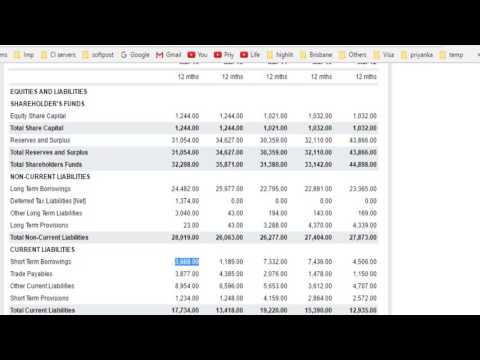Debit Definition & Meaning Leave a comment
From the bank’s point of view, when a credit card is used to pay a merchant, the payment causes an increase in the amount of money the bank is owed by the cardholder. From the bank’s point of view, your credit card account is the bank’s asset. Hence, using a debit card or credit card causes a debit to the cardholder’s account in either situation when viewed from the bank’s perspective. All accounts that normally contain a debit balance will increase in amount when a debit (left column) is added to them and reduced when a credit (right column) is added to them. The types of accounts to which this rule applies are expenses, assets, and dividends.

This double-entry system shows that the company now has $20,000 more in cash and a corresponding $20,000 less in books. When utilizing F l, a debit is on the left side of the chart, and even a credit is on the right. To assure the utilization of all general ledger and modified balance sheet items, debits, and credits. A business might issue a debit note in response to a received credit note. Mistakes (often interest charges and fees) in a sales, purchase, or loan invoice might prompt a firm to issue a debit note to help correct the error.
Debit Notes
To illustrate the term debit, let’s assume that a company has cash of $500. Therefore, the company’s general ledger asset account Cash should indicate a debit balance https://kelleysbookkeeping.com/how-to-prepare-a-balance-sheet/ of $500. If the company receives an additional $200, a debit of $200 will be entered and will result in the Cash account having a debit balance of $700.
- The term debit is similar to the term used in Italy more than 500 years ago when the double entry accounting system was documented.
- If a debit is applied to any of these accounts, the account balance has decreased.
- The credit line is the total of the short sale proceeds and the statutory margin amount per Regulation.
- For example, if you receive \$1,000 in cash, a diary entry would reflect a \$1,000 debit to the chequing account on your balance sheet since money is growing.
- Only one subtraction is needed, simplifying calculations before the availability of computers.
For example, if you receive \$1,000 in cash, a diary entry would reflect a \$1,000 debit to the chequing account on your balance sheet since money is growing. For instance, if Barnes and Noble bought \$20,000 in books, it would deduct \$20,000 from its cash account and credit \$20,000 from its books and inventory account. The concept of debits and offsetting credits are the cornerstone of double-entry accounting. Mistakes in a sell, buy, or loan statement (usually interest fees and penalties) may result in a business making a debit to assist in repairing the error. The main difference is that invoices always show a sale, where debit notes and debit receipts reflect adjustments or returns on transactions that have already taken place.
Words related to debit
In effect, a debit rises, and a credit reduces an expenditure account on the income statement. Sometimes, a trader’s margin account has both long and short margin positions. Adjusted debit balance is the amount in a margin account that is owed to the brokerage firm, minus profits on short sales and balances in a special miscellaneous account (SMA). What Is The Meaning Of Debit? Debit notes are a form of proof that one business has created a legitimate debit entry in the course of dealing with another business (B2B). This might occur when a purchaser returns materials to a supplier and needs to validate the reimbursed amount. In this case, the purchaser issues a debit note reflecting the accounting transaction.

While a long margin position has a debit balance, a margin account with only short positions will show a credit balance. The credit balance is the sum of the proceeds from a short sale and the required margin amount under Regulation T. The debit balance, in a margin account, is the amount of money owed by the customer to the broker (or another lender) for funds advanced to purchase securities. The debit balance is the amount of funds that the customer must put into their margin account, following the successful execution of a security purchase order, to properly settle the transaction.
Word Length
If the credit is due to a bill payment, then the utility will add the money to its own cash account, which is a debit because the account is another Asset. Again, the customer views the credit as an increase in the customer’s own money and does not see the other side of the transaction. All accounts must first be classified as one of the five types of accounts (accounting elements) ( asset, liability, equity, income and expense). To determine how to classify an account into one of the five elements, the definitions of the five account types must be fully understood. Liabilities, conversely, would include items that are obligations of the company (i.e. loans, accounts payable, mortgages, debts).
- If some other transaction involves a \$500 cash payment, the journal entry would include a \$500 credit to the chequing account since cash is being decreased.
- The left column is for debit (Dr) entries, while the right column is for credit (Cr) entries.
- Certain types of accounts have natural balances in financial accounting systems.
- In double-entry bookkeeping, all debits are made on the left side of the ledger and must be offset with corresponding credits on the right side of the ledger.
- “Daybooks” or journals are used to list every single transaction that took place during the day, and the list is totaled at the end of the day.
